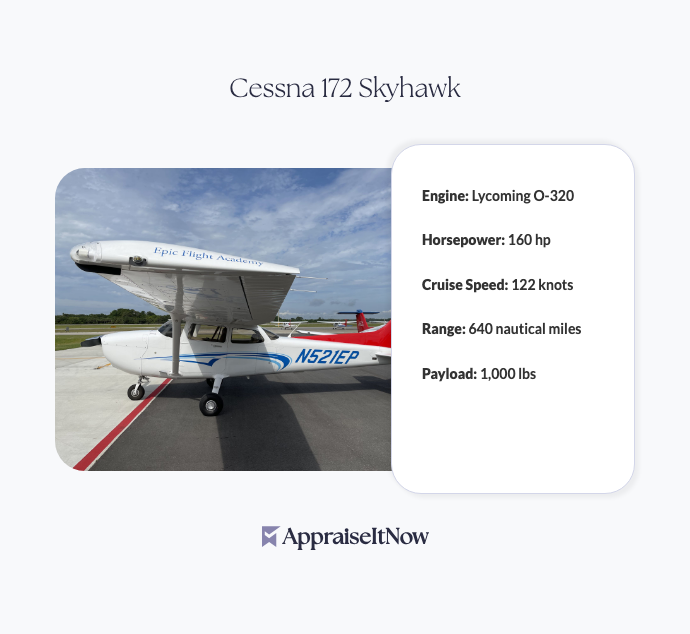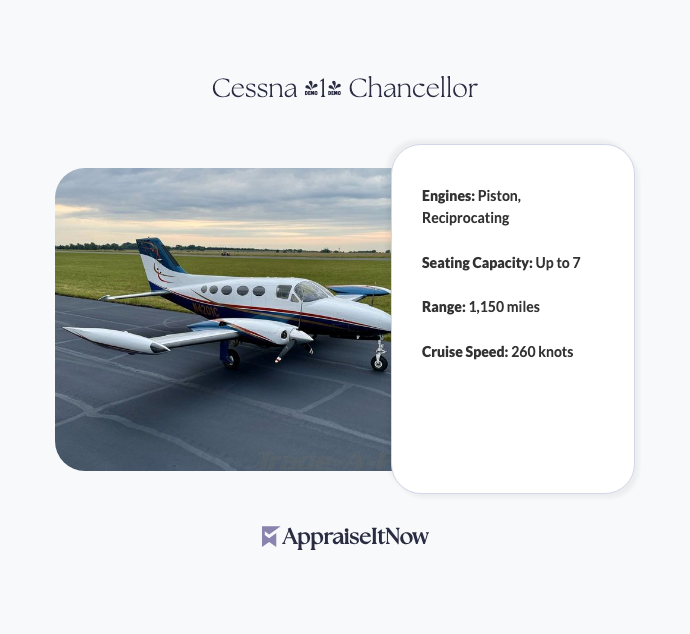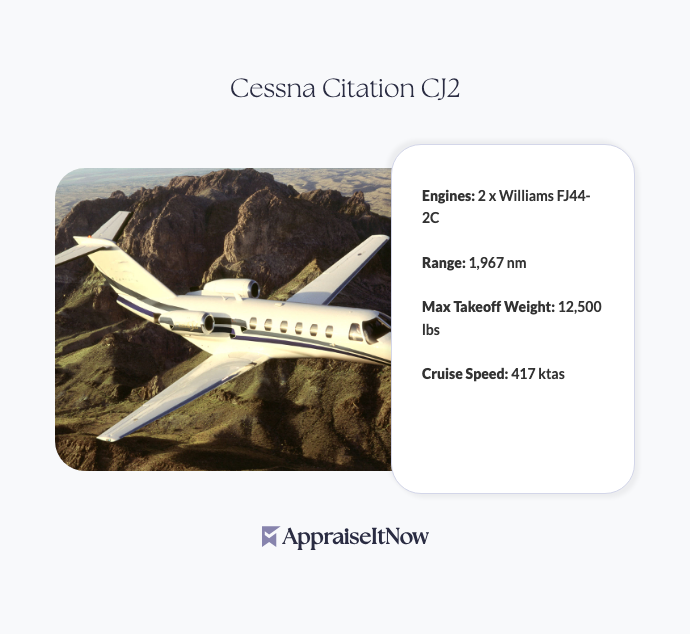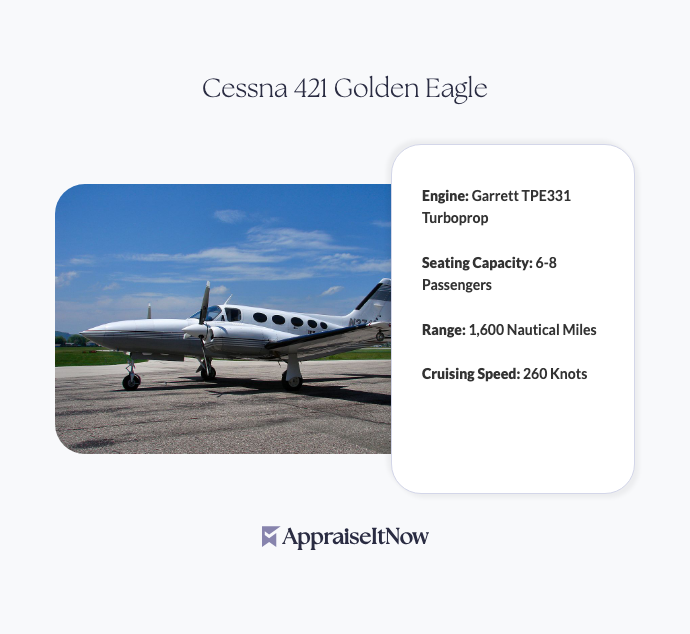<h1>How to Get Your Cessna 172 Skyhawk Appraised</h1>
<p>The Cessna 172 Skyhawk represents one of aviation's most reliable and enduring investments. Whether you're considering buying, selling, insuring, or simply need to establish fair market value for estate planning, understanding how to get your aircraft properly appraised is essential. With the Cessna 172 commanding estimates between <strong>$40,000 and $50,000</strong> depending on condition, age, and specifications, professional appraisal ensures you're making informed decisions backed by credible documentation.</p>
<h2>Why Your Cessna 172 Skyhawk Needs Professional Appraisal</h2>
<p>The Cessna 172 has earned its status as the most-produced aircraft in history—over <strong>43,000 units manufactured</strong> since its 1955 introduction—yet each aircraft's value depends on highly specific technical and market factors. Unlike general estimates you might find online, a professional appraisal examines your particular aircraft's condition, avionics systems, maintenance history, and market demand to establish accurate fair market value.</p>
<p>When should you seek appraisal for your Skyhawk? Banks require certified valuations before financing purchases. Insurance companies need documented values to establish replacement coverage. Estate executors must establish asset values for distribution and tax purposes. Sellers benefit from appraisals that justify asking prices and build buyer confidence. Professional appraisals provide the documentation needed across all these scenarios, particularly when working with credentialed appraisers holding certifications from organizations like <strong>AAA, ISA, ASA, CAGA, or AMEA</strong>.</p>
<div class="callout tip"><p><strong>Valuation Insight</strong></p>
<p>The Cessna 172's 70-year production run means significant variations exist across vintage models. A 1970 Skyhawk carries vastly different value and appraisal considerations than a 2020 model, making expert assessment crucial.</p></div>
<h2>Key Factors Affecting Your Cessna 172's Appraised Value</h2>
<p>Understanding what appraisers evaluate helps you prepare documentation and realistic expectations. The Cessna 172's reputation for reliability and its versatile design—suitable for flight training, personal transportation, and commercial operations—contribute to strong market demand, but individual aircraft values fluctuate based on specific characteristics.</p>
<p>Your aircraft's <strong>airframe hours</strong> represent the primary value driver. A Skyhawk with 500 hours remaining before major overhaul commands significantly higher value than one approaching mandatory engine replacement. Similarly, avionics modernization substantially affects value—does your 172 have advanced navigation systems and glass cockpit upgrades, or does it retain mechanical instruments? Aircraft equipped with modern avionics suitable for both VFR and IFR flight operations typically appraise 15-25% higher than comparable vintage models with outdated systems.</p>
<p>Engine condition and maintenance history heavily influence appraisal value. The Cessna 172's proven four-seat, single-engine design with its robust power plant has established the aircraft as both approachable for flight training students and capable for serious pilots tackling cross-country operations. Service records demonstrating consistent maintenance, recent inspections, and any major repairs or overhauls significantly impact your appraisal results.</p>
<p>Exterior and interior condition tells appraisers about overall care and remaining useful life. Paint condition, fabric integrity, corrosion indicators, upholstery wear, and glass clarity all factor into comprehensive condition assessments. An aircraft with recently recovered fabric and repainting appraises substantially higher than one with visible deterioration.</p>
<h2>Documentation to Gather Before Appraisal</h2>
<p>Preparing comprehensive documentation accelerates the appraisal process and supports higher valuations through clear provenance and maintenance records. Gather your aircraft's logbooks including engine logs, propeller logs, and frame logs documenting all maintenance, repairs, and modifications performed throughout its operating history. Flight schools and commercial operators should compile records showing utilization patterns and revenue generation, factors that influence valuation.</p>
<p>Your airworthiness certificate, registration documents, and any special FAA authorizations demonstrate current legal operating status. Documentation of recent inspections—100-hour inspections or annual condition inspections—provides concrete evidence of mechanical soundness. Photographs of your aircraft from multiple angles, interior views, instrument panel details, and engine compartment condition help remote appraisers understand overall state before conducting in-person evaluation.</p>
<p>If modifications have been made, retain all supplemental type certificates (STCs) and FAA approvals. The Cessna 172's versatility means many aircraft carry upgrade packages—autopilot systems, STOL modifications, or fuel system enhancements—that can add value when properly documented. Conversely, unapproved modifications may actually reduce appraised value by creating liability concerns for future owners.</p>
<div class="callout note"><p><strong>Documentation Priority</strong></p>
<p>Aircraft with complete, organized logbooks and clear maintenance history typically appraise 10-20% higher than comparable aircraft with spotty or incomplete records.</p></div>
<h2>Understanding Cessna 172 Model Variations and Their Appraisal Impact</h2>
<p>The Cessna 172 designation encompasses numerous variants, each with distinct appraisal considerations. The distinction between model years reflects continuous engineering refinements, system upgrades, and regulatory compliance enhancements. A 1955 original 172 carries significant historical value but may have limited practical modern utility, while a 2000s model 172S variant with glass cockpit systems and turbocharged capability commands premium valuations for active pilots.</p>
<p>The standard Cessna 172 Skyhawk baseline model represents the most common variant. The 172R introduced retractable landing gear, affecting both acquisition value and ongoing operational costs that appraisers consider when establishing fair market values. The high-performance 172S variant with turbocharged engine, glass cockpit avionics, and pressurization capability appraises substantially higher—potentially 50-60% above comparable naturally-aspirated models. The 172 Cutlass with retractable gear offers middle-ground positioning between standard and premium models.</p>
<p>When evaluating your aircraft's position within the market, professional appraisers use comparable sales analysis—researching recent transactions for similar model variants with comparable hours, equipment, and condition. This comparative approach, similar to methods used for <a href="/blog/what-is-an-automobile-appraisal">automobile appraisals</a>, provides objective market-based valuations rather than estimates based on acquisition price or wishful thinking.</p>
<h2>What Did Cessna 172s Cost When New?</h2>
<p>Historical pricing context helps owners understand value appreciation or depreciation patterns. A 1970 Cessna 172 cost approximately <strong>$12,000-15,000</strong> when new—roughly equivalent to $100,000 in today's dollars. Yet many well-maintained 1970s Skyhawks appraise in the $30,000-40,000 range, suggesting strong value retention for aircraft maintained to modern standards. Early models from the 1950s-1960s command premium valuations among vintage aviation collectors despite originally costing $6,000-8,000, reflecting the historical significance and scarcity of these pioneering aircraft.</p>
<p>New Cessna 172 Skyhawk models today carry retail prices ranging from <strong>$400,000 to $600,000</strong> depending on equipment selections and engine options. Understanding this context matters for appraisers assessing depreciation patterns and establishing realistic expectations for used aircraft valuations across different vintage periods.</p>
<h2>Maximizing Your Cessna 172's Appraisal Value</h2>
<p>Certain actions before scheduling appraisal can meaningfully impact results. Recent maintenance performed by FAA-certified mechanics demonstrates commitment to airworthiness standards. Detailed documentation of any major overhauls, component replacements, or system upgrades provides concrete evidence supporting higher valuations. Professional detailing—clean exterior, organized interior, spotless engine compartment—creates positive first impressions that appraisers note in condition assessments.</p>
<p>However, avoid scheduling major repairs immediately before appraisal. Deferred maintenance noted during inspection may actually reduce appraised value more than the repair cost justifies. Appraisers expect aircraft to show reasonable wear consistent with their hours and age. An aircraft with honest cosmetic wear but documented mechanical soundness typically appraises more favorably than one showing signs of postponed maintenance despite recent cosmetic refreshing.</p>
<p>Consider obtaining a pre-appraisal aircraft condition inspection from an independent A&P mechanic. This identifies potential issues before the formal appraisal process, allowing you to address critical items and demonstrate thoroughness to potential buyers or lenders. For <a href="/types/aircraft">aircraft</a> particularly, comprehensive condition documentation supports valuations and builds confidence with all stakeholders involved in your transaction.</p>
<div class="callout tip"><p><strong>Preparation Strategy</strong></p>
<p>Professional aircraft detailing and organized documentation can improve appraisals by 5-10%, while deferred maintenance may reduce values by 15-25% or more depending on severity.</p></div>
<h2>The Cessna 172's Operational Economics and Value Relationship</h2>
<p>Understanding the Cessna 172's realistic ownership costs helps appraisers contextualize market value and explains why well-equipped, well-maintained examples command premium prices. Operating expenses typically range from <strong>$6,000 to $12,000 per year</strong> depending on utilization rates, hangar costs, insurance premiums, and maintenance reserves. These economics matter because aircraft commanding high appraisal values usually demonstrate positive utility justifying ownership costs to buyers and lenders.</p>
<p>The Cessna 172's fuel efficiency and modest operating costs compared to comparable aircraft explain its dominance in flight training programs worldwide. Schools operating Skyhawks can profitably rent training hours at competitive rates, supporting robust used aircraft demand. This economic utility translates into stable valuations and strong appraisal support for reasonably priced examples. Aircraft overpriced relative to realistic operational economics may face appraisal challenges as appraisers consider buyer motivation and market absorption.</p>
<h2>Selecting the Right Appraiser for Your Skyhawk</h2>
<p>Not all appraisers possess equivalent expertise with general aviation aircraft. When seeking professional valuation services, prioritize appraisers with demonstrated experience appraising aircraft similar to your model year and equipment configuration. <strong>AppraiseItNow</strong> connects you with certified appraisers holding relevant aviation credentials who understand Cessna 172 market dynamics, regulatory requirements, and valuation methodology specific to general aviation assets.</p>
<p>Certified appraisers provide documentation accepted by banks, insurance companies, and courts—critical for financing, coverage establishment, or legal proceedings. They understand USPAP compliance requirements ensuring your appraisal meets professional standards. Remote appraisal with photographic submission expedites valuation for preliminary estimates, though most aircraft valuations benefit from in-person inspection allowing comprehensive condition assessment and mechanical evaluation.</p>
<p>The appraisal process mirrors approaches used for <a href="/types/specialty-real-estate">specialty real estate</a> and <a href="/types/commercial-aircraft">commercial aircraft</a>, combining comparable sales analysis, condition assessment, and market research. Your appraiser will investigate recent Cessna 172 transactions across geographic markets, regional price variations, and seasonal demand fluctuations that affect fair market value determination.</p>
<h2>Why Cessna 172 Values Matter for Insurance Coverage</h2>
<p>Insurance companies require accurate aircraft valuations to establish appropriate coverage limits and premium structures. With impressive range exceeding <strong>750 miles</strong>, the Skyhawk's cross-country capability increases operational risk and insurance considerations compared to local training aircraft. Well-documented appraisals help insurers assess liability exposure and establish replacement value coverage matching your aircraft's actual market worth.</p>
<p>Underinsured aircraft create problematic gaps if loss occurs. Appraisals ensuring your coverage reflects current fair market value protect you from devastating financial loss while preventing insurance disputes. For <a href="/types/business-assets">business assets</a> like flight training aircraft or charter operations, accurate valuations support appropriate coverage levels and operational planning.</p>
<h2>Do Cessna 172s Hold Their Value?</h2>
<p>The Cessna 172's legendary production history—over 43,000 aircraft built since 1955—suggests strong value stability. Yet individual aircraft depreciate based on usage patterns, maintenance quality, and equipment modifications. A flight school trainer with 12,000 hours may appraise far lower than a personal-use aircraft with 2,000 hours despite similar age, reflecting utilization intensity. Similarly, a properly maintained 40-year-old Skyhawk might hold better value than a neglected 15-year-old model, demonstrating that care and documentation matter more than chronological age.</p>
<p>The aircraft's versatility supports diverse market demand—flight students, personal pilots, commercial operators, and aviation enthusiasts all compete for available examples. This demand diversity creates relatively stable market conditions compared to specialized aircraft commanding narrower buyer pools. For investment-minded aircraft owners, Cessna 172s represent accessible general aviation assets where professional <a href="/blog/appraisal-101-everything-you-need-to-know-before-buying-or-selling">appraisal documentation</a> supports transaction confidence and value retention planning.</p>
<h2>Safety and Regulatory Considerations in Appraisals</h2>
<p>Aviation safety authorities consistently rate the Skyhawk among the safest general aviation aircraft, reflecting its stable design, redundant systems, and forgiving flight characteristics. The Cessna 172's gentle handling characteristics, excellent stability, and responsive controls make it ideal for training contexts while remaining capable for accomplished pilots. These safety attributes support valuations by expanding the qualified buyer pool and reducing insurance risk perception.</p>
<p>Appraisers verify that your aircraft maintains current airworthiness certificates and complies with all applicable FAA regulations. Recent avionics certifications for IFR operations or specialized training aircraft authorization can add value for specific buyer categories. Conversely, maintenance deferrals noted during inspection may trigger airworthiness questions affecting appraisals. Professional appraisals ensure regulatory compliance documentation supports valuations and instill buyer confidence in aircraft condition.</p>
<h2>Licensing and Operating Requirements</h2>
<p>FAA certification as a private pilot authorizes Cessna 172 operation for personal transportation, while commercial certification enables professional operations. Flight instructors need instructor ratings. These licensing requirements mean the appraisal market segments by intended use—student training aircraft versus personal/business use aircraft command different valuations reflecting buyer qualifications and operational capabilities.</p>
<p>For organizations appraising aircraft inventories or <a href="/types/recreational-vehicle">recreational vehicles</a> with complex use cases, appraisers factor in regulatory compliance, operational authorizations, and intended market positioning. Your appraisal should clearly identify aircraft condition, equipment status, and operational authorization categories to support transparent valuation and buyer matching.</p>
<h2>Understanding Aircraft Title and Ownership Documentation</h2>
<p>Clear title documentation supports higher appraisals and facilitates transactions. Your appraiser verifies aircraft registration, ownership history, and any outstanding liens or encumbrances. For <a href="/types/personal-property">personal property</a> like aircraft, clean title with documented maintenance history creates confidence justifying higher valuations. Conversely, unclear ownership, undocumented repairs, or questionable maintenance records may reduce appraisals by 10-20% regardless of apparent condition.</p>
<p>Prepare documentation showing previous ownership transfers, transfer of ownership forms, and any salvage history or accident involvement. Full transparency regarding aircraft history supports appraisals reflecting true market value rather than appraisers applying contingency deductions for undisclosed concerns.</p>
<div class="callout note"><p><strong>Key Takeaway</strong></p>
<p>A certified appraisal of your Cessna 172 Skyhawk provides essential documentation for purchasing, selling, insuring, or estate planning. Professional appraisers deliver accurate fair market valuations grounded in comparable sales analysis, condition assessment, and market expertise—ensuring you approach your aviation asset decisions with confidence and clarity supported by credible third-party documentation.</p></div>







.avif)







